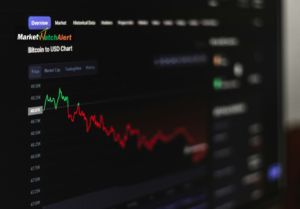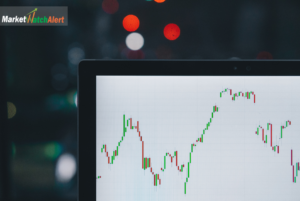Advanced cash trading has become logically notable, attracting both new and experienced monetary supporters. In any case, one much of the time ignored perspective is the impact of exchange costs on trading efficiency. Understanding these costs and sorting out some way to restrict them is urgent for increasing your benefits. This article dives into the various types of exchange charges and gives frameworks to diminish trading costs.
Sorts Of Exchange Charges
Trading Costs
Maker Costs: Charged to clients who add liquidity to the solicitation book by placing in limit demands.
Taker Costs: Applied to clients who dispose of liquidity by executing market orders that match existing solicitations on the solicitation book.
Store Costs
Costs are charged for moving resources into your exchange account, which can change depending upon the computerized cash or government-provided cash.
Withdrawal Charges
Costs for moving resources out of the exchange to an external wallet, habitually dependent upon the cash and the association traffic.
Change Charges
Charged while exchanging one advanced cash over totally to another inside the exchange.
Edge Costs
Interest costs for getting resources for edge trading.
Torpidity Costs
Applied to accounts that have been lethargic for a particular period.
Relationship Of Exchange Charges

| Exchange | Maker Fee | Taker Fee | Deposit Fee | Withdrawal Fee | Conversion Fee | Margin Fee |
| Binance | 0.1% | 0.1% | Free | Varies | 0.1% | 0.02%/4h |
| Coinbase | 0.5% | 0.5% | Free | Varies | 2% | 0.02%/day |
| Kraken | 0.16% | 0.26% | Free | Varies | 0.02% | 0.01%/4h |
| Bitfinex | 0.1% | 0.2% | Free | Varies | 0.1% | 0.05%/day |
| Bittrex | 0.2% | 0.2% | Free | Varies | 0.25% | 0.02%/day |
Procedures To Restrict Trading Costs
Pick The Right Exchange
Select exchanges with low trading costs, especially accepting you trade once in a while. Take a gander at costs across different stages preceding going with a decision.
Use Maker Orders
Submit limit demands that add liquidity to the market, habitually achieving lower costs diverged from market orders.
Harden Trades

Instead of making different little trades, set them into greater trades to restrict the amount of costs achieved.
Use Nearby Tokens For Cutoff points
A couple of exchanges offer charge limits while including their nearby tokens for trade costs (e.g., Binance Coin on Binance).
Screen And Plan Withdrawals
Plan withdrawals definitively to restrict charges, especially during seasons of low association blockage.
Take Advantage Of Headways
Really focus on restricted time spans when exchanges offer diminished charges or cost waivers.
Consider Participation Plans
A couple of exchanges offer enrollment plans with lessened costs for high-volume representatives.
Avoid Inconsequential Changes
Limit change charges by avoiding standard changes between computerized monetary forms.
Reliably Overview Charge Plans
Charge plans can change; reliably overview and change your trading methods in like manner.
Use Charge Free Store Methods
Use store methodologies that don’t cause charges, for instance, direct bank moves where available.
Conclusion
Understanding and restricting exchange costs is central for propelling your computerized cash trading method. By picking the right exchange, utilizing maker orders, and definitively orchestrating your trades and withdrawals, you can in a general sense decline your trading costs. Stay informed about charge plans and take advantage of progressions to limit your expenses and enhance your benefits.
FAQs
What are maker and taker costs?
Maker costs are charged to clients who add liquidity to the solicitation book by placing in limit demands, while taker charges apply to clients who dispense with liquidity by executing market orders.
How should I avoid high withdrawal costs?
Plan your withdrawals during seasons of low association blockage and pick computerized monetary forms with lower move costs.
Are store costs ordinary?
Most exchanges don’t charge store costs for computerized monetary standards, but some could for government provided cash stores.
What is the upside of including nearby tokens for costs?
Neighborhood tokens often give limits on trading charges, decreasing in everyday costs.
How do inaction charges work?
Dormancy costs are charged to accounts that needy individual partook in trading or various activities for a foreordained period.
Could trading costs move between exchanges?
To be sure, trading charges can change essentially between exchanges, so it is significant for check out at them preceding picking a phase.
What are change costs?
Change costs are charges achieved while exchanging one computerized cash over totally to another inside the exchange.
Do all exchanges offer edge trading?
Actually no, not all exchanges offer edge trading. It is open on select stages with varying supporting expenses.
How much of the time could it be fitting for me to review discount structures?
Regularly study charge structures, especially accepting that you notice changes in your trading costs then again expecting that the exchange announces revives.
What are the risks of high-repeat trading?
High-repeat trading can incite higher all out charges, potentially adjusting any trading gains.
Might I anytime at any point get charge limits through progressions?
For sure, many exchanges offer restricted time spans with reduced costs or charge waivers.
Why might it be really smart for me to set trades?
Consolidating trades diminishes the amount of trades and, consequently, the total costs.
How do participation plans decrease costs?
Participation plans much of the time give lessened charges for high-volume shippers as a trade off for a month to month or yearly cost.
What might it be really smart for me to consider while picking an exchange?
Consider trading costs, wellbeing endeavors, client experience, and the collection of maintained cryptographic types of cash.
Are there cost free store procedures?
To be sure, some store methods, as quick bank moves, may not achieve charges.
What is a taker demand?
A taker demand is a market demand that matches and kills liquidity from the solicitation book.
How do restricted time limits work?
Exchanges could offer brief cost diminishes or waivers during extraordinary periods to attract extra clients.
Why is liquidity huge in an exchange?
Higher liquidity ensures smoother and faster trade execution with immaterial expense slippage.
What are the upsides of using limit orders?
Limit solicitations can reduce trading costs by allowing you to set a specific expense, as often as possible achieving lower charges.
How truly organize obstruct periods impact charges?
Network blockage can incite higher withdrawal charges as a result of extended interest for trade taking care of.

